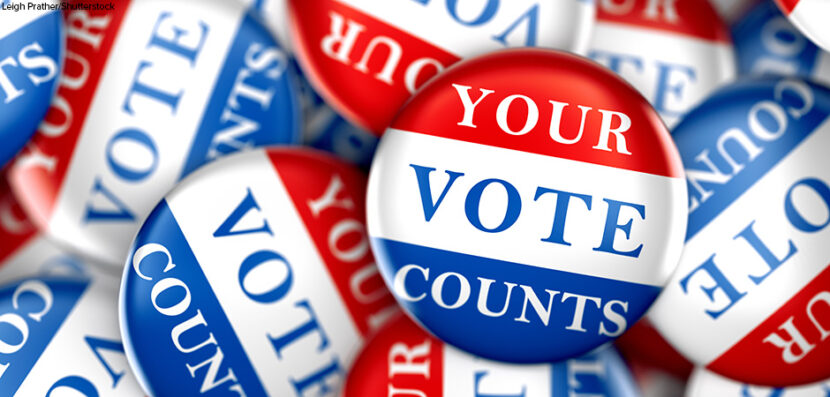- Current Events Nebraska Rejects Winner-Take-All Proposal
- Citizenship Voting Under Age 18
- Citizenship Citizenship in Action
- Democratic Party Biden’s and Trump’s Recent Primary Results
- Elections Trump and Biden Win South Carolina and Michigan Primaries
- Democratic Party Trump and Biden Win Big in Early February Contests
Senate Races Tighten in Key States
The 2022 midterm elections will take place in just a few weeks on November 8. Thirty-six of fifty state governors are being elected. The party balance in the U.S. Congress is also expected to change in this election. Democrats currently have control of the House of Representatives and the Senate, but the majority is very small. Republicans only need to flip one seat to gain control of the Senate. Democrats also only hold an eight-vote majority in the House of Representatives. In some states, early voting has already begun, and many key Senate races are tightening. Here, Election Central takes a closer look at what is happening.
The Advertising Influence
Election results in recent decades show that the political party controlling the White House typically loses seats after a midterm election. But it looked like Democrats might avoid that result this November. But as Election Day approaches, the Republican Party has spent large amounts of money on television and radio ads.
You may have seen or heard an ad paid for by the Senate Leadership Fund. This group is a superPAC linked with Republican Senator Mitch McConnell. (A superPAC is a political action committee that raises campaign funds but does not specifically coordinate with individual election campaigns. This allows it to raise unlimited campaign funds that it can then spend in multiple political races.) The Senate Leadership Fund spent $52 million on TV ads in the first two weeks of October alone. Another group called MAGA Inc. has ties to Donald Trump political supporters. MAGA Inc. has spent more than $2 million in Pennsylvania and Ohio–two states where the Republican Senate candidate was falling behind in recent polls. As a result of this increased advertisement spending, new poll numbers indicate that many important Senate races have become much more competitive.
A Look at Key Races
In Pennsylvania, Democrat John Fetterman held a significant lead over his opponent, Republican Mehmet Oz. However, the recent increase in Republican advertising spending narrowed the gap. Also, Fetterman suffered a stroke that cost him time campaigning. While Fetterman is still expected to win, he is not leading by nearly the margin he was before.
In Georgia, the state’s first African American senator, Democrat Raphael Warnock, is being challenged by Republican Herschel Walker. Walker is well known in Georgia as a former University of Georgia football player and Heisman Trophy winner. Walker’s campaign has been plagued by recent scandals. Despite this, Walker has been able to raise a lot of money. Warnock is still expected to win the election.
Republicans seem to be gaining the upper hand in Nevada. Incumbent Democratic Senator Catherine Cortez Masto is losing ground to Republican Adam Laxalt. (An incumbent is an elected official who is already in office and is trying to be reelected.) Many Nevada residents are suffering financially because of the nation’s high inflation rate and its effect on rising prices. As a result, Cortez Masto is now seen to be the most vulnerable senator in the country running for reelection.
In Arizona, Democratic incumbent Mark Kelley is facing challenger Republican Blake Masters in another close race. Masters has recently lost support from the Senate Leadership Fund superPAC. Kelley is holding onto his lead in that state’s Senate race.
In Wisconsin, Republican Ron Johnson is the incumbent senator. He faces Mandela Barnes, a Democratic challenger, and the current lieutenant governor. Barnes was expected to win by a comfortable margin. In August, the Marquette University Law School released poll numbers that showed Barnes had a seven percent lead over Johnson. A new Marquette poll from early September showed that Johnson attracted 49 percent of the voters and Barnes attracted 48 percent. This narrow margin is expected to continue until Election Day.



